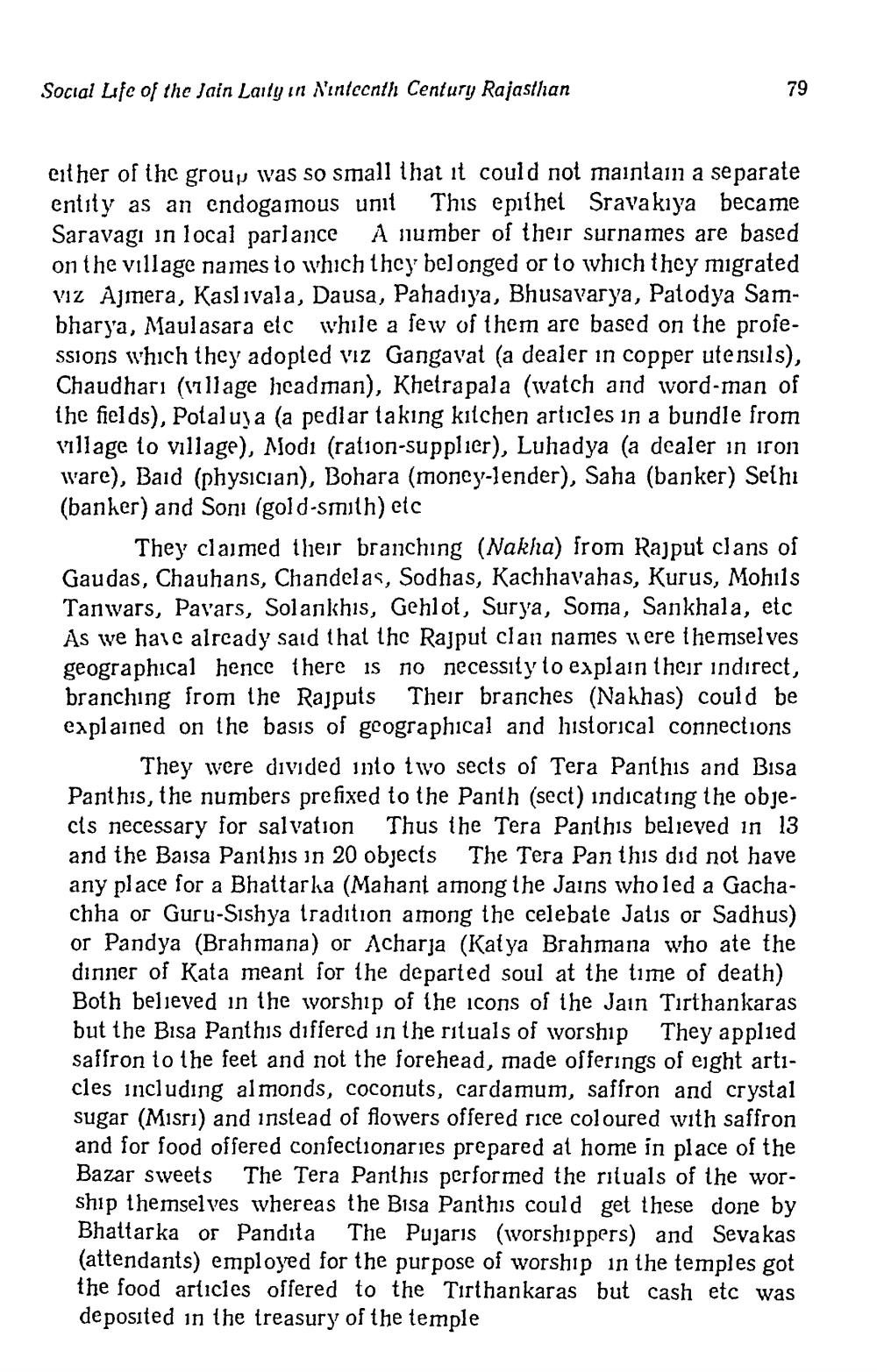________________
Social Life of the Jain Laity in Ninteenth Century Rajasthan
79
either of the group was so small that it could not maintain a separate entity as an endogamous unit This epithet Sravakıya became Saravagi in local parlance A number of their surnames are based on the village names to which they belonged or to which they migrated Viz Ajmera, Kaslivala, Dausa, Pahadiya, Bhusavarya, Patodya Sambharya, Maulasara etc while a few of them are based on the professions which they adopted viz Gangavat (a dealer in copper utensils), Chaudhari (village headman), Khetrapala (watch and word-man of the fields), Potaluya (a pedlar taking kitchen articles in a bundle from village to village), Modi (ration-supplier), Luhadya (a dealer in iron ware), Baid (physician), Bohara (money-lender), Saha (banker) Selhi (banker) and Soni (gold-smith) etc
They claimed their branching (Nakha) from Rajput clans of Gaudas, Chauhans, Chandel as, Sodhas, Kachhavahas, Kurus, Mohils Tanwars, Pavars, Solankhis, Gehlot, Surya, Soma, Sankhala, etc As we have already said that the Rajput clan names were themselves geographical hence there is no necessity to explain their indirect, branching from the Rajputs Their branches (Nakhas) could be explained on the basis of geographical and historical connections
They were divided into two sects of Tera Panthis and Bisa Panthis, the numbers prefixed to the Panth (sect) indicating the objecls necessary for salvation Thus the Tera Panthis believed in 13 and the Baisa Panthis in 20 objects The Tera Pan this did not have any place for a Bhattarka (Mahant among the Jains who led a Gachachha or Guru-Sishya tradition among the celebate Jatis or Sadhus) or Pandya (Brahmana) or Acharja (Katya Brahmana who ate the dinner of Kata meant for the departed soul at the time of death) Both believed in the worship of the icons of the Jain Tirthankaras but the Bisa Panthis differed in the rituals of worship They applied saffron to the feet and not the forehead, made offerings of eight articles including almonds, coconuts, cardamum, saffron and crystal sugar (Misri) and instead of flowers offered rice coloured with saffron and for food offered confectionaries prepared at home in place of the Bazar sweets The Tera Panthis performed the rituals of the worship themselves whereas the Bisa Panthis could get these done by Bhattarka or Pandita The Pujaris (worshippers) and Sevakas (attendants) employed for the purpose of worship in the temples got the food articles offered to the Tirthankaras but cash etc was deposited in the treasury of the temple




